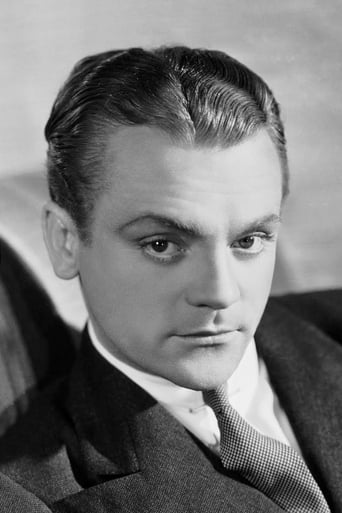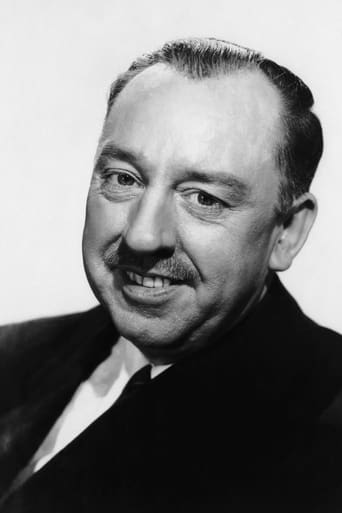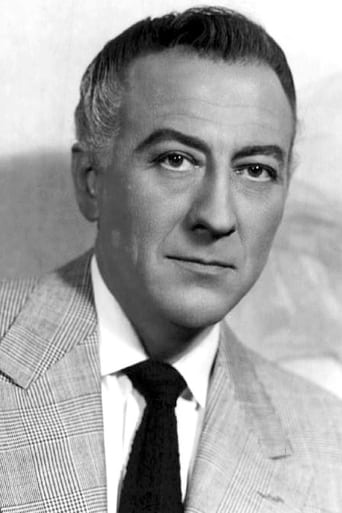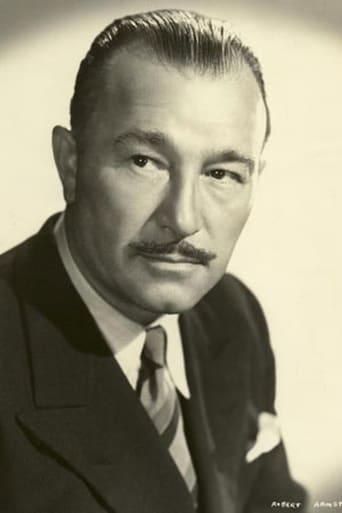Solemplex
To me, this movie is perfection.
Matrixiole
Simple and well acted, it has tension enough to knot the stomach.
CrawlerChunky
In truth, there is barely enough story here to make a film.
Guillelmina
The film's masterful storytelling did its job. The message was clear. No need to overdo.
jakob13
Released in April 1945, 'Blood in the Sun' groans. It is an interesting film in some ways. Jimmy Cagney produced it. Nazi Germany was a month away from defeat, thereby ending the war in Europe. But the war raged furiously in the Pacific as the Americans island hopped getting closer to the Japanese mainland. And though the war was lost in southeast Asia, China and in chains of islands in the Pacific, Japanese troops fought tenaciously, but wouldn't give up. It is noteworthy for the script written by Lester Cole, one of the Hollywood 10. Cole narrative uses the 'Tanaka Memorial', a 1929 document (of doubtful authenticity) outlining Japan's plan of conquest in Asia. The US movie- going public knew of Hitler's 'Mein Kampf' and saw endless films on Nazi conquest in Europe and the like. But knew little of Japan other than its bombing of Pearl Harbor, its cruel war in China, as well as rudely trouncing the British and the French in southeast Asia, and to make matters worse coming close in Burma to rattling the pillars of the British Raj in India. Of course, they knew of the Flying Tigers and the valiant Americans fighting the Japanese in American Philippines. But of Japanese history, they knew little as did America's government. (They also knew of the rounding up the American Japanese on the west coast for the simple reason, they were Japanese and put them behind barbed wire in camps. But they left them alone in Hawaii for the plain and simple reason they make a good percentage of the population there.) 'Blood in the Sun' is interesting to another degree: the blatant use of stereotypes, of depicting the Japanese as primitive, childlike or madmen or all three and possibly more. All the principle characters are western or made up to look like Japanese, speaking with stilted accents. Which should not surprise us if we had seen the part on Asia of Frank Capra's 'Why We Fight', a multi-paneled film to explain isolationist Americans in the armed services why the US was waging war globally--it is blatantly racist, and superior to a 'small people' wily and evil and warlike with the bare trappings of the civilized. 'Blood in the Sun' is simplistic, and is a film shaped to the talents of a spunky, quixotic Cagney, who out talks, out wits and out judo his adversaries. The energy he exudes is best seen in his last last film, Billy Wilders' 'One, two, three'. 'Blood in the Sun' won the Oscar for Best Direction in Black & White in 1946. It grossed more than $3 million at the box office. Seeing it today, 70 years after its release, blow away the cobwebs and seeing spunky Cagney and the beautiful Sylvia Sydney isn't too hard on the eyes.
Tad Pole
. . . a brave American journalist got wind of Japanese Imperialism and nipped WWII's Pacific Theater in the bud, saving millions of lives. James Cagney portrays Nick Condon in this Biopic, since Nick was half Irish and half Norweigen, just like Cagney himself. Nick got wind of the Japanese militarists' secret plot to conquer first China, then Singapore, the Philippines, Alaska, Hawaii, etc. Being educated in American public schools, Nick easily out-smarted Yamamoto and Tojo, as shown here. So the Rape of Nanking, the Sneak Attack on Pearl Harbor, the Bataan Death March, the BRIDGE ON THE RIVER KWAI, Midway, Attu, Guadacanal, Corregidor, Tarawa, Iwo Jima, the A-bombs and so forth became the bad dreams of an Alternate Reality. When you try to square today's American interstates being clogged with Japanese cars, today's American fingers being glued to Japanese devices 24\7, and today's American Major League Baseball teams crawling with Japanese players, whose version of U.S.-Japanese relations in the 1900s seems more plausible--Wikipedia's or Nick's? I, for one, say Nick's does.
morrison-dylan-fan
Despite my dad owning a number of his films on DVD,I have somehow up to now only seen James Cagney in the overlooked 1935 movie G-Men. (which in no way is related to X-Men!)Talking to a friend recently,I discovered that he was interested in seeing Cagney's non-gangster titles,which led to me deciding that it would be a good time to see Cagney cover the sun with blood.The plot:Being credited as the editor who saved the paper from folding,Tokyo Chronicle editor Nick Condon begins to suspect that he may have just grabbed the story of the decade,thanks to an informant giving him a document titled "The Tanaka Memorial",which contain details about Japan's planned invasions for world domination.With having enjoyed a high amount of press freedom whilst working at the paper,Condon begins to suspect that he may have gotten hold of something very important,due to a number of police officers and politician's suddenly becoming extremely aggressive towards the paper.Fearing that he and Chronicle are at increasing risk of being permanently shut down,Condon rushes to publish the story,as he begins to find out how far the police,army and politician's are willing to go to keep the document out of the public's eye.View on the film:Made just as WWII was coming to an end,and also just before questions about the real Tanaka Memorial began to get raised, (with the document now being seen as a fake,designed to get the Alieies on the side of China's Communist party,which it succeeded in doing) the screenplay by Lester Cole,Frank Melford,Garrett Fort and Nathaniel Curtis initially make the movie appear that it is going to take a close look at the blurred lines separating the government and the press.Sadly,despite director Frank Lloyd and art directors A.Roland Fields and Wiard Ihnen, (who would both win an Oscar for their work in the title) covering the movie with tense darken alleyways and low-lit lighting,the screenplay burns out after the first 30 minutes,with the exciting espionage moments in the film being drained of their energy by the writer's jumbling them up,instead of allowing each double cross/close escape to twist naturally.Being filmed as his second feature to be from his own production company,James Cagney gives a rattling performance as Nick Condon,with Cagney showing Condon gradually becoming increasingly distrusting of all those around him as he gets closer to hitting the dead line.Along with Condon using his quick-wit to out smart the dark forces at power,Cagney also displays a surprising skill for excellent stunt work,thanks to the movie featuring a number of great,rough'n' tumble judo battles,all of which are not performed by a stunt person,but are in fact done by Cagney himself (something which Cagney would continue training with,long after the movie had been completed),which leads to this blood stained sun being one that wont fully fade out into a total eclipse.
DangerAwesome
Blood on the Sun intrigued me for a couple reasons. It was made in Hollywood about Japan, and it was released in 1945, and it marks a return to film after a 4 year hiatus for Sylvia Sidney.I would open by calling this movie moderately racist. I think anyone who has seen the film should find that agreeable. There's quite a lot of stereotypes as well as American actors dressing up as Japanese. That being said, I went in expecting that based on the time period when it was made.The movie contains one of the best action sequences of its time period, as well as one of the worst. The bad one comes near the beginning. In that scene Cagney takes on several Japanese military soldiers by himself but is ultimately knocked out cold by a very fake looking karate chop to the back of his neck. The good action sequence however comes at the very end of the movie. Cagney does his own stunts for this entire movie, so I give him a lot of credit for the strength of that scene. It uses long takes rather than short cuts, making it look more like real life and less like a movie.The big issue with the movie is that in the entire 98 minutes there was only one good scene. The beginning is slow until the early fight scene I already described. The extreme weakness of that scene leaves the movie looking cheap and campy. I mentally checked out of the movie at that point. By the time Sylvia Sidney arrived there wasn't a movie left to save.





